CENTERSPREAD

Pining for Ezra: The other Cornell
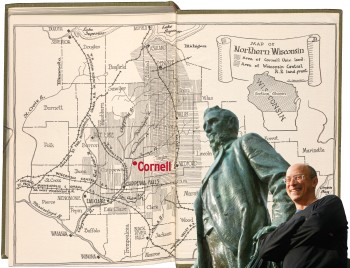
A historical map depicting Cornell's land-grant acreage in Wisconsin circa the late 1800's. This map appeared in the second edition (1964) of The Wisconsin Pine Lands of Cornell University (Cornell University Press, State Historical Society of Wisconsin) by Paul Gates. See larger image Video interview with Dan Mansoor
Cornell, Wisconsin: It's a small city on the banks of the Chippewa River and, seemingly inexplicably, bears the name of Cornell University's founder. This community, 755 miles from Ithaca, N.Y., boasts the Cornell Theatre, a newspaper named the Cornell Courier and a portrait of Ezra Cornell hanging prominently in City Hall.
Dan Mansoor '79, MBA '80, a Wisconsin native, took a road trip to this Cornell earlier this year, convinced there was an unexplored story to tell about this small municipality's connection and significance to Cornell University, separated by hundreds of miles and 150 years. What he has been uncovering has led to a blog, "In Search of Ezra's Pines" www.cornellpines.blogspot.com, and an ongoing, unfolding project.
"Every online query, every e-mail, every phone call seems to open a new door and tells a new story," Mansoor says. "I'm having so much fun."
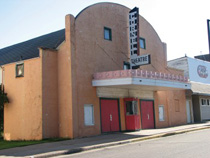
Scenery and signage in the small city of Cornell, Wis. See larger image
Creating land-grant universities
The story begins in the seemingly unexciting world of legislation and land "scrip" certificates, starting with New York state's 1863 acceptance of the conditions of the Morrill Land Grant Act of 1862.
The Morrill Act, passed by Congress and signed into law by President Abraham Lincoln, created land-grant colleges – eventually at least one in each U.S. state – that would teach agriculture and the mechanic arts (engineering). Each eligible state received 30,000 acres of federal land for each member of Congress the state had as of 1860. This land, or proceeds from its sale, was to be used to establish and fund these educational institutions.
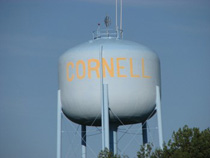
Scenery and signage in the small city of Cornell, Wis. See larger image
If there was not enough federal land within a state to meet that state's land-grant allocation, the state was issued scrip – essentially paper – that authorized the state to select available lands in other states to fund its land-grant institution.
For New York, then the most populous state in the country, the Morrill Act called for 990,000 acres of federal land (as New York had 33 members of Congress) – this amounted to more than 1,500 square miles, an area larger than Rhode Island.
Meanwhile, Ezra Cornell had offered his farmland on Ithaca's East Hill as a site and $500,000 of his personal fortune as an initial endowment for Cornell University, which was officially founded in 1865 by a New York State Senate bill that named the university as the state's land-grant institution.
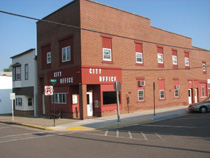
Cornell, Wisconsin's city office headquarters; a portrait of Ezra Cornell hangs inside. See larger image
As the federal government owned no federal land within the state's borders, and since states were prohibited from owning land within another state, Ezra Cornell agreed to purchase scrip for 500,000 acres at its fair market value (60 cents per acre) and selected valuable timberland in northern Wisconsin. Henry Sage, who succeeded Cornell as chairman of the board of trustees following Cornell's death in 1874, convinced the university's first president, Andrew Dickson White, and the restless trustees to refrain from selling the land for decades and to allow it to appreciate. When the books were closed on most of the sales by the early 1900s, the land and trees added more than $5 million to the university's endowment fund. While most other states had sold their federal land allocation immediately for as little as 42 cents an acre, the peak price paid for Ezra's pines reached $82 an acre. Some have described this as the most successful land speculation deal in U.S. history. And, in an unusual footnote, Cornell University kept – and still owns – the mineral rights to much of this land.
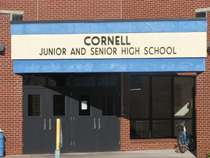
Scenery and signage in the small city of Cornell, Wis. See larger image
Enter Dan Mansoor
Mansoor, who runs a philanthropy advisory and nonprofit consulting firm in Cleveland, Ohio, married a Cornellian, Joyce Rothschild '80. His sister, Yardena, is a Class of 1974 alumna.
The Wisconsin connection is "a story that should be told," Mansoor says.
Mansoor initially learned about this part of the Cornell story when he read a paper on Cornell's land-grant origins by retired budget director Michael Whalen (then in the university's Division of Planning and Budget), on Cornell's website. Mansoor's curiosity was piqued; he then discovered there was a city named Cornell.
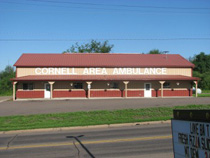
Scenery and signage in the small city of Cornell, Wis. See larger image
Mansoor's blog begins with his first evening this past June in the remote town of 1,466, famous for being home to the world's only surviving pulpwood stacker, which ceased operations in 1972 but was key to Wisconsin's timber industry for decades beginning in the late 1800s. The town was originally named Brunet Falls but was later named in Ezra Cornell's honor (Ezra Cornell himself sketched out the first planned city map for this community, established on 2,000 acres of the original pineland investment).
"I think there is a remarkable amount of drama in the tale," Mansoor says of the many unfolding storylines he is following on his blog. "A young university near bankruptcy; a devastating fire (1871) that counts as a near miss; and mineral rights to the acreage still owned by Cornell University and, as of yet, unexplored."
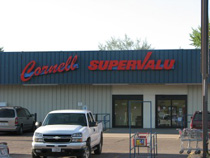
Scenery and signage in the small city of Cornell, Wis. See larger image
As Mansoor states in his blog: "Like relatives aware of each other's existence but separated by [nearly] 1,000 miles and 150 years I'm asking, 'Is a meaningful reunion possible? Will we have anything in common? Will there be beer tents?'"
Mansoor hopes that the university and alumni will take an interest in this unfolding story especially considering several upcoming milestones: the city of Cornell's 100th birthday (2013) and the upcoming land-grant (2013) and university (2015) sesquicentennials.
Check out the blog, Mansoor says, and share your thoughts and questions.
Then there's Cornell, Michigan ...